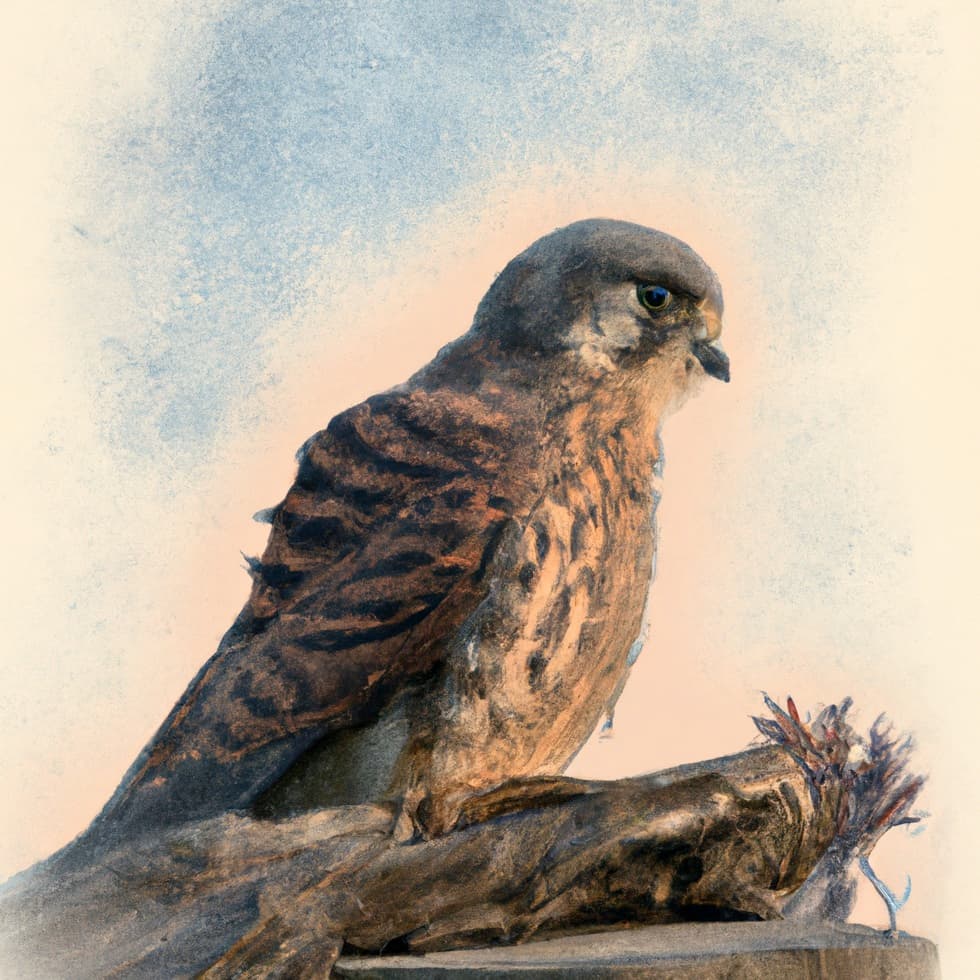
The Kestrel is a small, predatory bird of prey that is found throughout much of the world. With their distinctive markings and impressive hunting skills, Kestrels have captured the hearts of birdwatchers and nature lovers. In this blog, we will take a closer look at 27 curious facts about the Kestrel.
27 Curious Facts about the Kestrel
- The Kestrel is a member of the falcon family, Falconidae, which includes other species such as the Peregrine Falcon and the American Kestrel.
- They have distinctive russet-coloured plumage with black spots, a long tail, and a hooked beak.
- Kestrels are known for their impressive hunting skills and are able to hover in the air while searching for prey.
- They have a small, compact body and long, pointed wings, which are adapted for life in the air.
- The collective noun for a group of Kestrels is a “kettle” or a “boil.”
- Kestrels are primarily insectivorous and are able to find food in a wide range of habitats, including grasslands, farmland, and open woodland.
- They have a relatively long tail that helps them to manoeuvre in the air.
- Kestrels are able to breed at a young age, with some individuals breeding in their first year.
- They are able to recognise individual members of their family and will often return to the same areas to forage and roost.
- Kestrels are known to engage in courtship displays, in which the male will fly up and then dive down in a spectacular aerial display.
- They are able to form monogamous pair bonds that can last for multiple breeding seasons.
- In some cultures, Kestrels are considered to be a symbol of power and strength.
- The oldest known Kestrel fossil dates back to the Miocene epoch, around 23 million years ago.
- Kestrels are found throughout much of the world, including Europe, Asia, and North America.
- They are able to blend in with their surroundings and are often difficult to spot in the wild.
- Kestrels are vulnerable to predation by a wide range of animals, including larger birds of prey, snakes, and mammals.
- They are important insect predators and play a vital role in controlling insect populations in their habitat.
- Kestrels are known to nest in a variety of locations, including tree cavities, crevices in buildings, and on the sides of cliffs.
- They have been featured in a variety of cultural works, including literature, poetry, and art.
- Kestrels are able to navigate using landmarks and visual cues in their environment.
- They have a relatively long lifespan for a bird of their size, with some individuals living up to 10 years in the wild.
- Kestrels have a unique system of vocalisation that allows them to communicate with their mates and other members of their family.
- They are able to feed on a wide range of prey, including insects, small mammals, and birds.
- Kestrels are known to roost in small groups during the non-breeding season.
- They can survive in a wide range of habitats, from urban areas to rural farmland.
- Kestrels are a key indicator species for the health of their habitat, and their presence is often used as a measure of ecosystem health.
- Kestrels are a fascinating and important species that continue to inspire wonder and curiosity among birdwatchers and nature lovers worldwide.
Where to Find the Kestrel
Kestrels are found throughout much of the world, including Europe, Asia, and North America. They are commonly found in a wide range of habitats, including grasslands, farmland, and open woodland. They are particularly fond of areas with short vegetation, which provides suitable foraging habitats.
In urban areas, Kestrels are commonly found on the sides of buildings and other man-made structures, as well as in parks and gardens. They are also found in a variety of other habitats, including farmland, grasslands, and open woodland.
Feeding the Kestrel
Kestrels are primarily insectivorous and are able to find food in a wide range of habitats, including grasslands, farmland, and open woodland. If you are interested in feeding Kestrels in your local area, it is important to provide them with a varied diet that includes a mix of insects, such as grasshoppers, beetles, and crickets.
It is also important to provide fresh water and to avoid feeding them food that is harmful to their health, such as processed foods.
Kestrels may also feed on small mammals and other birds, particularly during the breeding season.
Final Thoughts
The Kestrel is a small but mighty species that continue to inspire wonder and curiosity among birdwatchers and nature lovers. With their distinctive markings and impressive hunting skills, Kestrels are a favourite of many bird enthusiasts. Whether you are a seasoned birdwatcher or simply appreciate the natural world, the Kestrel is a species that is sure to captivate and intrigue. So why not take a moment to appreciate the beauty of these amazing birds and perhaps even provide them with a meal in your local park or garden? With their important contributions to the ecosystem and their unique characteristics, Kestrels truly are a treasure of the bird world.